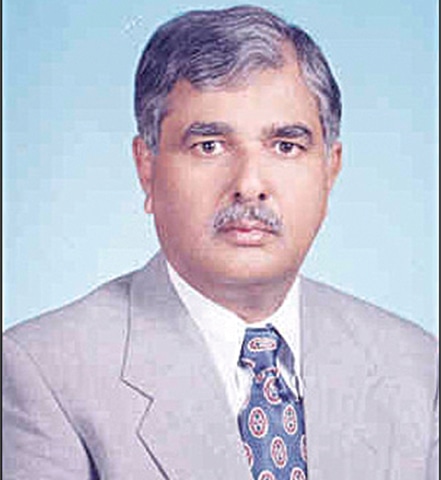ISLAMABAD: Justice Amir Hani Muslim on Monday withdrew himself from a five-judge Supreme Court bench specially constituted to hear the Rs45 billion Orange Line Metro Train (OLMT) project.
“I cannot hear this case,” observed Justice Muslim while announcing his recusal from the bench without explaining any reasons.
Apart from Justice Muslim, the bench consisting of Justice Ejaz Afzal, Justice Sheikh Azmat Saeed, Justice Umar Ata Bandial and Justice Ijaz-ul-Ahsan had to take up a set of four separate but identical petitions moved by the Punjab government, Lahore Development Authority, the Punjab Mass Transit Authority (PMTA) and the National Engineering Services Pakistan (Nespak) against the Aug 19 order of the Lahore High Court for suspending construction work on the OLMT within 200 feet of 11 heritage sites. The order came on a petition filed by a civil society activist, Kamil Khan Mumtaz. Now the case will commence when Chief Justice Mian Saqib Nisar constitutes a new bench.
At the last hearing on Dec 14, the former chief justice, Anwar Zaheer Jamali, had asked the parties involved in the case to submit their objections on two conflicting opinions submitted by a commission consisting of Messrs Typsa-Asian Consulting Engineers (Pvt) Ltd and Prof Robin Coningham, an expert in archaeology, to re-verify the credibility of two environmental assessments of the project on the heritage sites conducted by National Engineering Services Pakistan (Nespak) in July 2015 and February 2016.
The Nespak reports were relied upon by the Punjab government in the context of the Antiquities Act, 1975, and the Punjab Special Premises (Preservation) Ordinance, 1985.
In his report, Prof Robin Coningham had declared the project in contravention of the Antiquities Act, 1975, and said that the execution of the project involved new constructions within 200 feet of at least five immovable antiquities protected by the Antiquities Act.
On the other hand, Typsa in its analysis had concluded that Nespak reports appeared to be complete from structural point of view and relevant with respect to safety and stability of buildings both during the construction stage and under train operation.
Now in its objections, filed through counsel Shahid Hamid, Nespak claimed that Prof Coningham lacked requisite expertise to re-verify the credibility of Nespak reports in the context of the Antiquities Act, 1975 and the Punjab Special Premises (Preservation) Ordinance, 1985.
Explaining further, it said the structural engineering was a field distinct from archaeology and anthropology and only a person qualified and expert in the field of structural engineering could conduct analysis and design of new structures and evaluate safety and stability of the existing structures.
It said the two Nespak reports were highly technical and based on engineering knowledge, Finite Element Analysis (FEA) method and understanding of SAP 2000 software. These reports relate to the field of structural engineering and dynamic analysis and cannot be evaluated by a person who does not have knowledge of structural engineering, dynamic analysis, FEA method and computer software SAP 2000. The report explained that Nespak in its earlier reports had analysed the vibration impact on the heritage sites based on internationally acceptable German standards.

